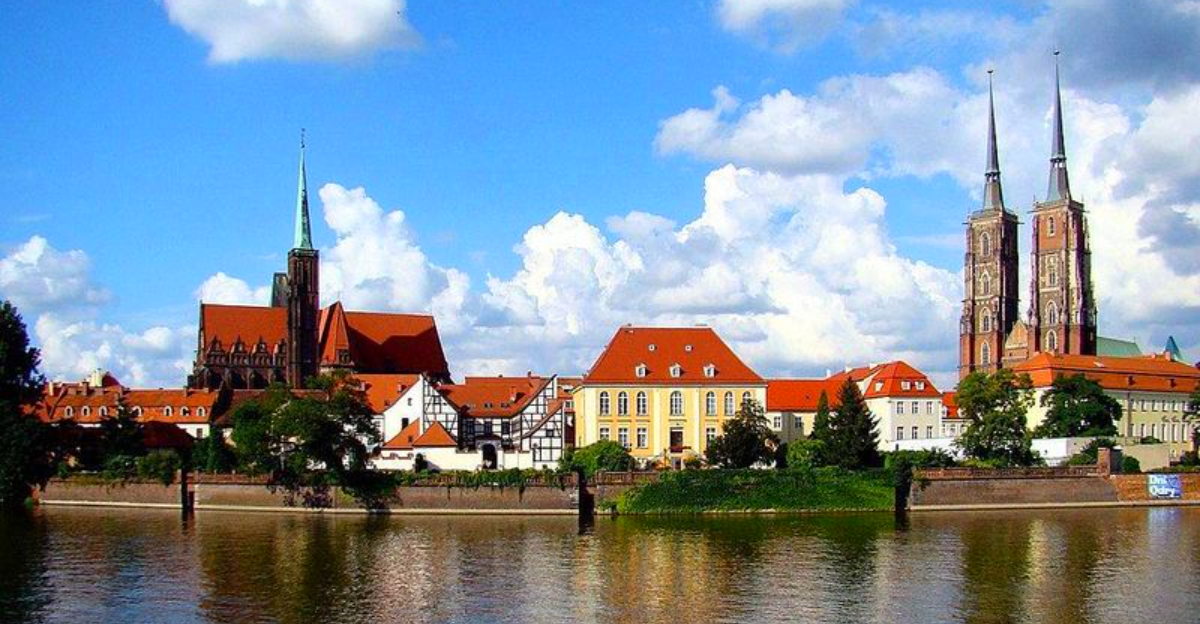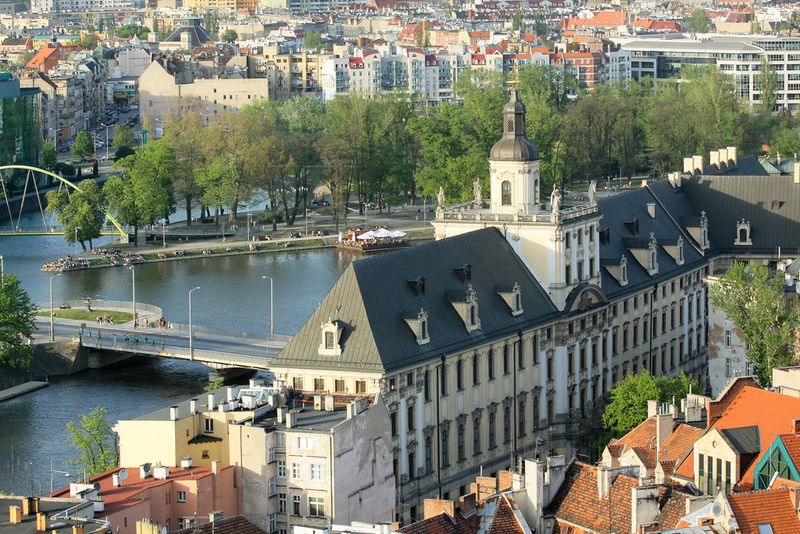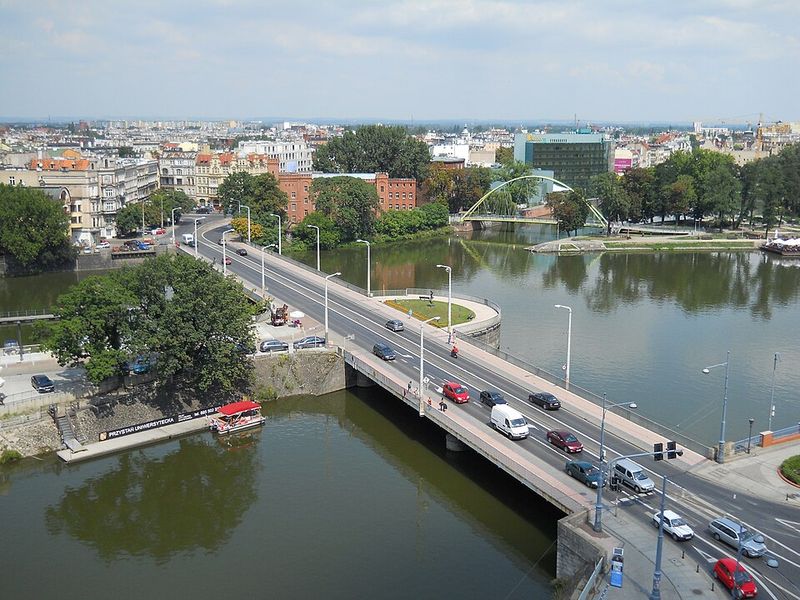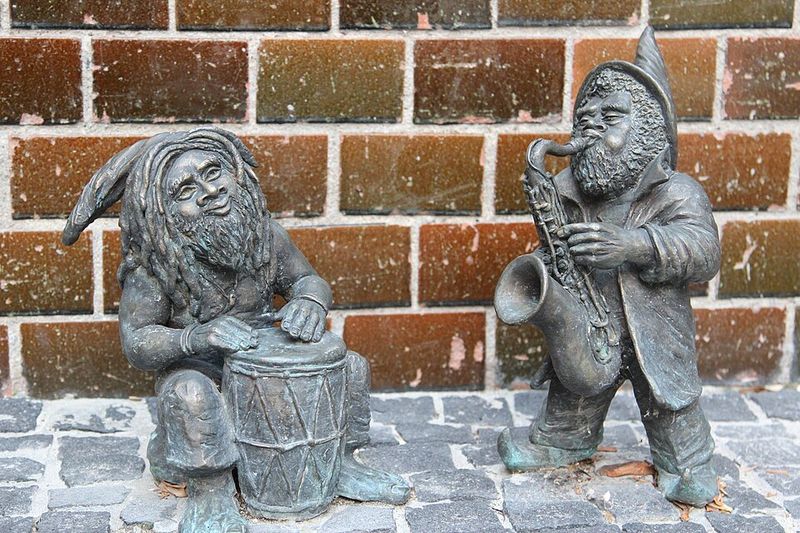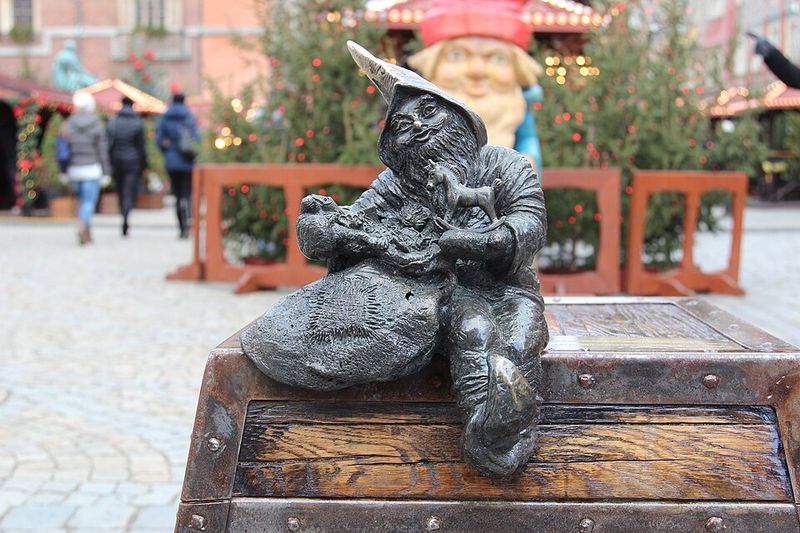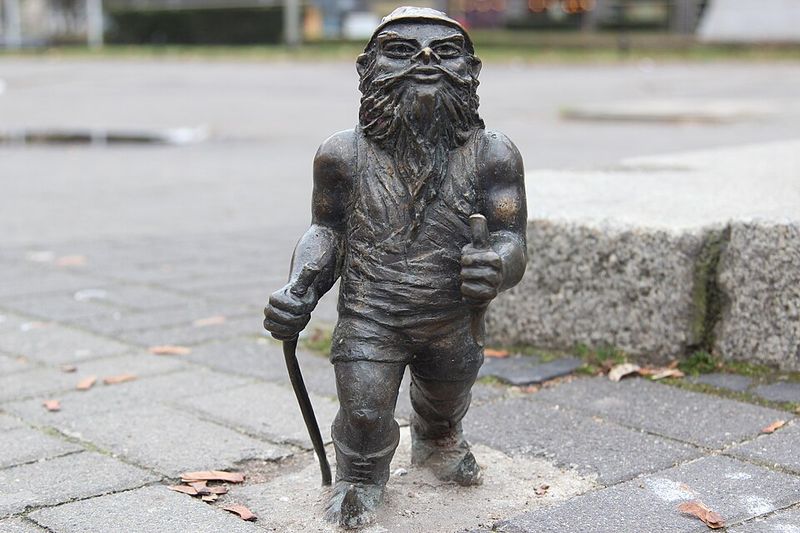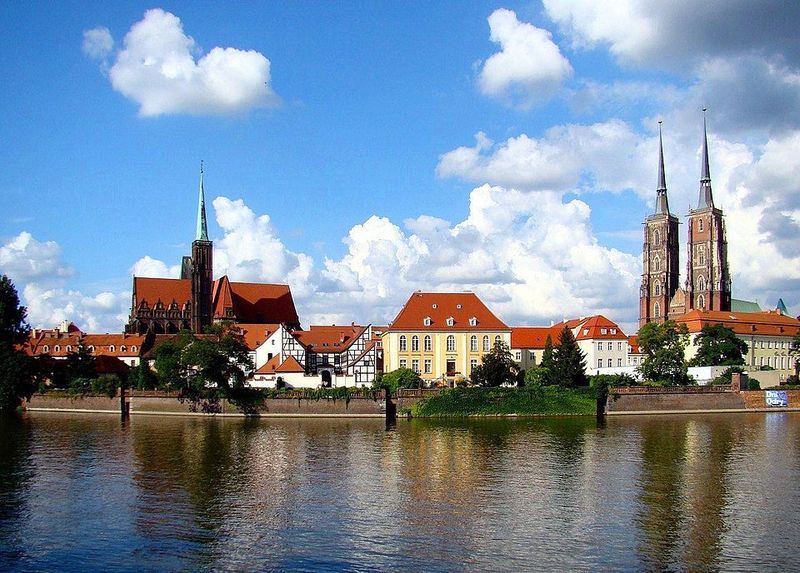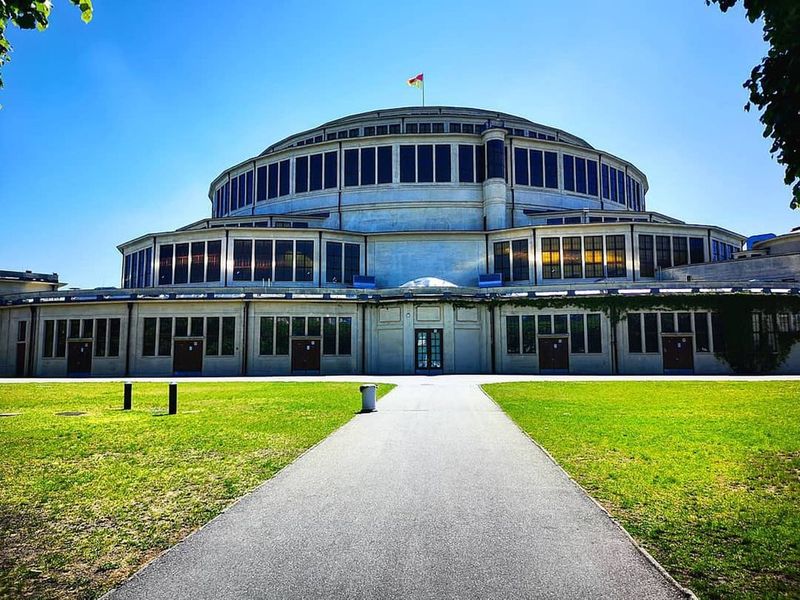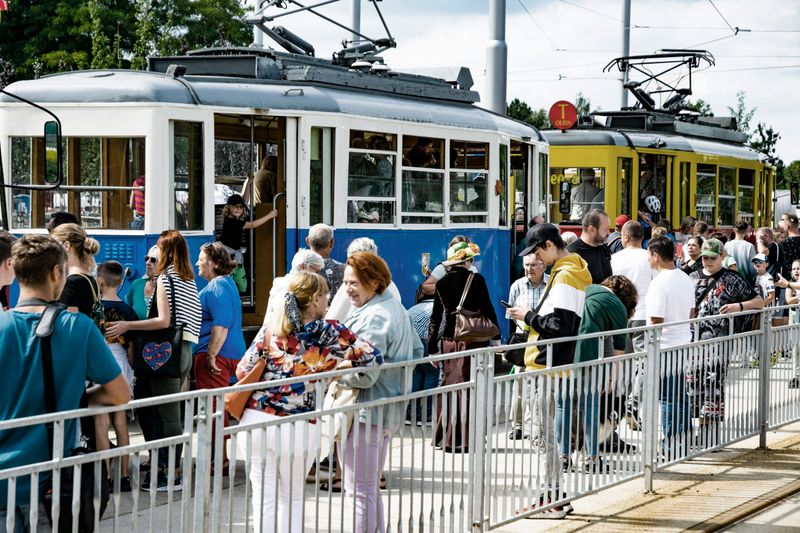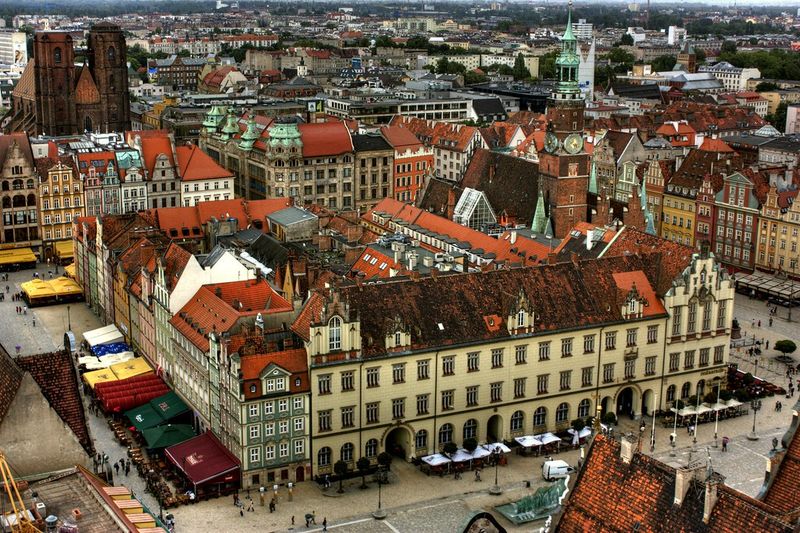Think you know Europe’s best-kept secrets? Wrocław will surprise you with islands, bridges, and a whimsical cast of bronze dwarfs that turn every corner into a discovery. From Gothic spires to modern concrete marvels, the city blends centuries of history with youthful energy. Ready to cross storybook bridges, chase legends, and sip craft beer between architectural icons? Dive into these twelve facts and plan your most playful European escape yet.
1. A City Built on the Odra River
Wrocław sits astride the Odra River, braided with side channels, tributaries, and canals that shape its neighborhoods and rhythms. While twelve rivers is a poetic flourish, the watery lattice is real, guiding bridges, embankments, and green riverfront paths. Kayaks and tour boats reveal brick bulwarks, modern marinas, and venerable churches mirrored on the surface. Flood history informs resilient engineering and parks that double as spillways. Locals picnic on grassy banks, cyclists glide over waterfront promenades, and festivals light up the quays. The river is both stage and spine, binding daily life to centuries of trade, faith, and reinvention.
2. Home to Around 21 Islands
Wrocław’s charm multiplies across its 20 to 21 islands, linked by an elegant web of bridges and footpaths. Each island has a distinct mood, from tranquil gardens to bustling promenades. The most storied is Ostrów Tumski, where the city’s origins and sacred landmarks rise above the river. Others host museums, student hangouts, and riverside cafés with terrace views. Island-hopping is part urban stroll, part treasure hunt, rewarded by unexpected vistas. Seasonal light and mist transform waterways into living theater. Whether sunrise solitude or evening ambience, these islands make everyday crossings feel like miniature voyages.
3. More Than 100 Bridges
Often dubbed the Venice of Poland, Wrocław is stitched together by over a hundred bridges, each with a character of its own. Sleek modern spans meet ornate ironworks, while old stone arches carry tramlines past pastel façades. Bridge-hopping reveals layers of architectural history and river engineering, balanced between function and romance. Couples linger at viewpoints; photographers chase reflections and evening bokeh. Some bridges whisper wartime stories, others celebrate post-flood resilience. As traffic hums above, kayaks slide below, creating a moving gallery of perspectives. Here, even a commute becomes a cinematic crossing between districts and eras.
4. The Legendary Wrocław Dwarfs
Across Wrocław, hundreds of bronze dwarfs peek from curbs, windowsills, and shopfronts, turning the city into an open-air scavenger hunt. Each little figure has a name and story, inviting smiles, selfies, and conversations with locals. Families collect maps; seasoned visitors follow themed routes. The dwarfs transform wayfinding into play, guiding you to bakeries, libraries, banks, and tiny courtyards. They soften formal architecture with whimsy, while hinting at deeper history and satire. You’ll spot them reading, napping, conducting, even typing away. The more you look, the more you find, and soon the city feels delightfully alive.
5. Born From a Protest Movement
The dwarf motif sprang from the Orange Alternative, a subversive art-protest movement in 1980s Wrocław. Activists used humorous graffiti and gnome imagery to lampoon censorship and authoritarian absurdity. By replacing banned symbols with whimsy, they created a space for laughter and solidarity in public squares. Flash mobs and surreal street happenings disarmed fear and attracted crowds. Today’s bronze dwarfs honor that spirit, turning satire into civic identity. They remind visitors that playful gestures can carry serious messages. Wandering the city becomes a living history lesson, where giggles and resistance share the same cobblestones.
6. Each Dwarf Has a Personality
Look closely and you’ll notice every dwarf is distinct, often reflecting the nearby business, craft, or institution. There are bankers counting coins, chefs juggling pierogi, students buried in books, firefighters mid-rescue, and musicians mid-riff. Some are accessible mascots; others hide in gutters or cling to lanterns. New figurines are added yearly, keeping the collection evolving. Locals adopt favorites and share tips with visitors. The city’s directory helps you decode names and backstories, turning a stroll into a character-driven tour. These miniature personalities give Wrocław a human-scale warmth that official monuments rarely achieve.
7. Ostrów Tumski: Wrocław’s Sacred Heart
Ostrów Tumski is the city’s spiritual cradle, an island of Gothic silhouettes and quiet lanes. Gas lamplighters still kindle the streetlights at dusk, casting amber halos around red-brick walls. The Cathedral of St. John the Baptist towers over the river, its observation deck rewarding climbers with sweeping views. Cloisters, gardens, and bridges invite contemplative walks. Even in peak season, the quarter retains a hushed, timeless dignity. Organ concerts ripple through chapels; swans drift beneath buttresses. Here, Wrocław’s layered story – medieval devotion, baroque ornament, modern restoration – resonates in every arch and bell.
8. The Market Square Is One of Europe’s Most Beautiful
Wrocław’s Rynek dazzles with a kaleidoscope of façades encircling one of Europe’s largest medieval squares. At its heart stands the sculpted Gothic Town Hall, a masterpiece of tracery, clocks, and legends. Cafés spill onto cobbles, buskers perform, and trams hum nearby. Seasonal markets add flavors of honey, cheese, and mulled aromas. By day, colors pop in crisp light; by night, façades glow like a stage set. The square anchors city life and orients visitors, with lanes radiating toward bookshops and breweries. It’s a place to linger, people-watch, and absorb Wrocław’s confident pulse.
9. A UNESCO Masterpiece: Centennial Hall
Centennial Hall, completed in 1913, is a pioneering giant of reinforced concrete that reshaped architectural ambition. Its vast ribbed dome and radial plan host concerts, exhibitions, and sporting events under a single sweeping span. Recognized by UNESCO, it stands beside the Pergola, multimedia fountain, and lush Szczytnicki Park. The complex pairs engineering bravado with graceful civic space. Inside, light filters across monumental geometry; outside, families stroll leafy paths and watch fountain shows. Centennial Hall embodies Wrocław’s forward-looking streak while honoring shared memory, a centennial tribute that still feels boldly contemporary.
10. A Youthful University City
With more than 100,000 students, Wrocław thrums with seminars by day and concerts by night. The baroque University building presides over a constellation of faculties, labs, and co-working hubs. Cafés teem with laptops and debates, while festivals fill calendars year-round. The Good Beer Festival draws enthusiasts to craft taps and experimental brews. Affordable eats, indie cinemas, and riverside hangouts make student life sociable and creative. International programs bring global voices to local stages. This youthful current keeps tradition lively and innovation visible in galleries, tech meetups, and street art.
11. A City Shaped by Many Nations
Wrocław’s identity reflects centuries under Poland, Bohemia, Austria, Prussia, and Germany before returning to Poland after World War II. This mosaic produced a cityscape where Gothic towers neighbor Habsburg elegance and Prussian brickwork. Postwar reconstruction preserved key silhouettes while adding modern layers. Museums and plaques illuminate shared and contested memories, from merchants’ guilds to wartime upheaval and population transfers. Culinary tastes mirror the blend, with Silesian classics beside Central European comfort foods. Walking the streets feels like paging through overlapping atlases, each chapter leaving architecture, language traces, and traditions that still converse today.
12. Europe’s Most Playful City to Explore
Exploring Wrocław feels like a game where every route reveals another delight. One moment you’re counting bridges, the next you’re spotting dwarfs or detouring to a hidden courtyard café. Islands invite picnics and riverside bike rides; evening lights turn spires and water into theater. It’s compact enough for serendipity, rich enough for days of discovery. Families, solo travelers, and culture seekers all find a tempo that suits them. The city rewards curiosity with stories, viewpoints, and flavors, ensuring even a simple walk becomes a memory.
